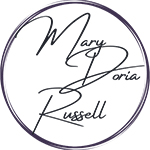One week on, and life is starting to get back to normal. Annie the Dachshund is doing her best to take our minds off the loss of Leo the Retriever by having an episode of back trouble, so we can pay attention even more attention to her than usual.
Four hundred years ago, German farmers began breeding dogs to kill badgers in their burrows. The result was the standard dachshund: a fearless and independent 30-pound dog with short, strong legs, paddle-like front feet, and a ferocious drive to dig. Their long bodies are flexible, selected for squirming down tunnels, but same genes that shorten their legs also make their spinal disks fragile. They are not designed to jump. Jumping is bad for them.
Dachshunds were never meant to be lapdogs, but some lines have been crossed with spaniels, and there are also lines that are smaller and more companionable. And now, four centuries later, there is Annie: 16 pounds of self-esteem and entitlement. Small, but still a dachshund.
She is — like all her kind — athletic and willful. She launches herself at life. She hops into cars. She vaults onto furniture and jumps off it. She has filled the backyard with holes. She pursues chipmunks with comic intensity. Once, she caught a mouse. It squeaked, which evidently startled her. The mouse got away, but this event remains a cherished memory; when she goes outside, she always checks under that bush, in case the mouse is unwise enough to return.
She sleeps in the big bed. Every morning, when she decides it’s time to get up, she announces her decision by taking a steeplechaser’s flying leap off the mattress. She hits the ground with a thump and races down the hallway at a full gallop. She goes downstairs in a series of comical moves that bring to mind a Slinky’s motion. She can be down in the kitchen before I’ve had time to swing my feet out from under the covers.
All of this is by way of saying that Annie does a lot of stuff you’re not supposed to let your dachshund do.
Annie’s not a good example of her breed, and just as well. She is sturdier, thicker-built, stronger than the willowy, curvaceous, graceful dachshunds that win ribbons at dog shows. She is also 11, which is late middle age for a small dog. She has become a little heavier than is good for her, or for her back, and doesn’t get as much exercise as she used to — all of which is true of her people, as well. She and I also spend more time in a recliner in front of the TV than is good for either of us.
She’s got a bad disk in her neck now, and signals this by crying, “Eeep!” when she is picked up, and by laying low — which is the only way a dachshund can, of course. During the day, she confines herself to her sleep-sack, hardly moving for hours. Don and I both have tricky backs ourselves, and we recognize the pattern: the warning twinges are now enough to tell us to be careful, and Annie seems to have discovered this herself. So far, she’s done fine with the same regimen as Don and I use: rest until things settle down, a slow return to normal activity, and renewed resolve to get more exercise.
That said, we really have to become vigilant about not letting her jump. We don’t want to denature her, but with Leo’s memory still very much a part of the day, we don’t want to let her harm herself. Already, the vet is suggesting surgery, but we’re reluctant to go down that road if it can be avoided.
